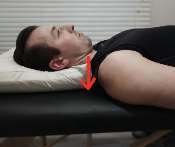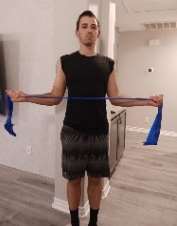Postural Education
Posture varies from person to person, but anatomically there are positions that should be maintained to help alleviate stress on the body. Finding and maintaining the correct positions of our joints can help to reduce excessive stress, along with decreasing risk of degeneration. As much as it would be helpful to have correct posture all day, it is unnatural. Maintaining correct posture during all hours of the day is difficult secondary to the onset of fatigue, stress, lack of focus, and due to certain job requirements. My best recommendation is to identify what “correct” posture is and periodically check your body’s alignment whenever you get a chance. Try to create a habit of identifying when you’re out of position.
What correct “posture” is:

3 points of contact
Standing with your back up against the wall, there should be three points of contact where pressure is applied on your body.
- 1. Back of head
- 2. Midback
- 3. Buttox
Where do we go wrong?
People have a tendency to have a midback that is too rounded, which results in the person’s head being too forward in relation to their body. When your head is positioned too far forward, stress is increased throughout the neck and midback leading to pain and dysfunction.
What can we do about it?
Posture can be corrected with appropriate exercises. Focus on modifying your work related activities to allow for improved positioning. Try to develop a habit of identifying when you’re out of position, so then you can take the opportunity to correct it.


What does it feel like?
Imagine you have a string attached to all the segments of your spine up and through your head. When your midback is rounded and your head is forward then the string is loose and has slack. Feel as if there is somebody pulling the string taut and making you sit up tall. If done correctly, you will feel taller. Next, puff out your chest and try to tuck your chin closer to your neck.
Exercises:


Chin tuck
15 reps with 5 sec holds
Pectoralis stretch with foam roll



1 min hold per position (hold onto weight for extra stretch)
Thoracic extension stretch

30 sec to 1 min holds
Chest Openers


30 sec to 1 min holds
Additional Tips:
- Stretching should be done at medium intensity for sustained periods of holding (30 sec to 1 min in duration)
- Everybody’s body is different, which means that not all exercises are tolerated by all. There is always a modification of an exercise to make it easier on your body, while still getting benefit.
